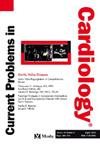Design and methods of the AUTOMATED-WCT trial: evaluating machine learning–based ECG support for WCT interpretation
IF 3.3
3区 医学
Q2 CARDIAC & CARDIOVASCULAR SYSTEMS
引用次数: 0
Abstract
Background
Distinguishing wide complex tachycardia (WCT) as ventricular tachycardia (VT) or supraventricular WCT (SWCT) is critical yet challenging. Manual ECG algorithms require substantial expertise and are inconsistently applied, and contemporary computerized ECG interpretation (CEI) systems often return only a generic “wide complex tachycardia” label. Novel machine learning–based ECG models (Solo Model, Paired Model) can provide a VT probability or a direct VT/SWCT classification, but they have not yet been evaluated in a prospective, randomized, workflow-integrated trial.
Design
We will conduct a prospective, multicenter, investigator-initiated, open-label, four-arm randomized reader trial. Physicians (attendings and fellows in cardiology, emergency medicine, critical care) will be randomized 1:1:1:1 to: (1) Control #1—WCT ECG only; (2) Control #2—WCT ECG + baseline ECG; (3) Solo Model—WCT ECG + model output (no baseline ECG); (4) Paired Model—WCT ECG + baseline ECG + model output. Each participant will interpret 20 adjudicated WCT ECGs on a secure virtual platform, classify rhythm, rate confidence and percieved usefulness, and indicate likely next steps in clinical management. Primary endpoint: WCT classification accuracy. Secondary endpoints: sensitivity, specificity, PPV, NPV, F1 score, time to diagnosis, interpreation confidence, perceived usefulness, and intended management after diagnosis.
Conclusion
The AUTOMATED-WCT Trial will be the first randomized, multicenter evidence on machine learning–based ECG decision support for WCT differentiation.
自动WCT试验的设计和方法:评估基于机器学习的心电图对WCT解释的支持。
背景:区分宽复杂性心动过速(WCT)为室性心动过速(VT)或室上性心动过速(SWCT)是关键但具有挑战性的。手动心电算法需要大量的专业知识,并且应用不一致,而现代计算机心电解释(CEI)系统通常只返回通用的“广泛性复杂心动过速”标签。新的基于机器学习的ECG模型(单独模型,配对模型)可以提供VT概率或直接VT/SWCT分类,但尚未在前瞻性,随机,集成工作流程的试验中进行评估。设计:我们将进行一项前瞻性、多中心、研究者发起、开放标签、四组随机读者试验。医生(心脏病学、急诊医学、重症监护的主治医师和研究员)将以1:1:1:1的比例随机分配到:(1)对照#1-仅wct心电图;(2)对照#2- wct心电图 + 基线心电图;(3) Solo模型- wct心电图 + 模型输出(无基线心电图);(4)配对模型- wct心电图 + 基线心电图 + 模型输出。每个参与者将在一个安全的虚拟平台上解释20个经判定的WCT心电图,对节律进行分类,评估信心和感知的有用性,并指出临床管理的下一步可能的步骤。主要终点:WCT分类准确率。次要终点:敏感性、特异性、PPV、NPV、F1评分、诊断时间、解释置信度、感知有用性和诊断后的预期管理。结论:自动WCT试验将是首个基于机器学习的ECG决策支持WCT鉴别的随机、多中心证据。
本文章由计算机程序翻译,如有差异,请以英文原文为准。
求助全文
约1分钟内获得全文
求助全文
来源期刊

Current Problems in Cardiology
医学-心血管系统
CiteScore
4.80
自引率
2.40%
发文量
392
审稿时长
6 days
期刊介绍:
Under the editorial leadership of noted cardiologist Dr. Hector O. Ventura, Current Problems in Cardiology provides focused, comprehensive coverage of important clinical topics in cardiology. Each monthly issues, addresses a selected clinical problem or condition, including pathophysiology, invasive and noninvasive diagnosis, drug therapy, surgical management, and rehabilitation; or explores the clinical applications of a diagnostic modality or a particular category of drugs. Critical commentary from the distinguished editorial board accompanies each monograph, providing readers with additional insights. An extensive bibliography in each issue saves hours of library research.
 求助内容:
求助内容: 应助结果提醒方式:
应助结果提醒方式:


